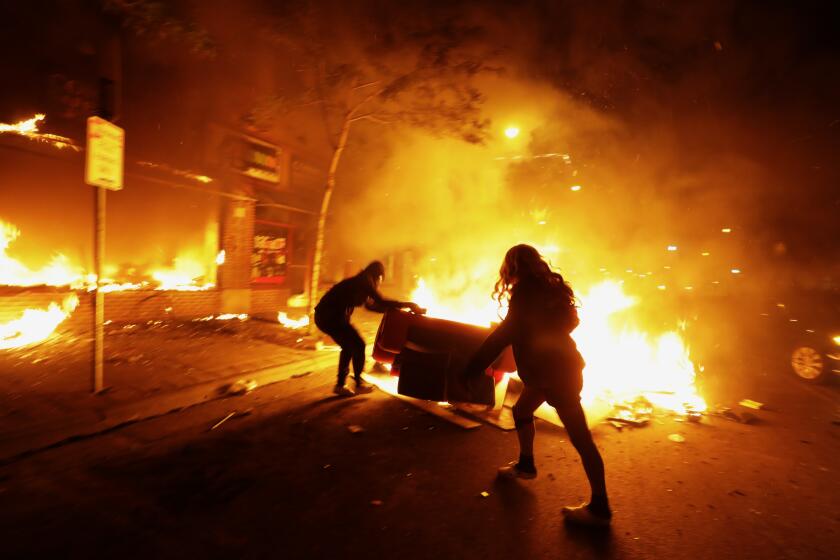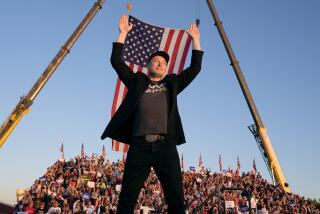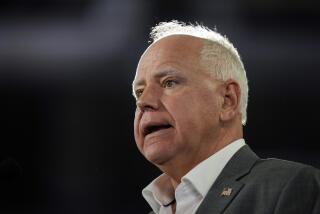Walz’s handling of unrest after George Floyd’s death coming under renewed scrutiny
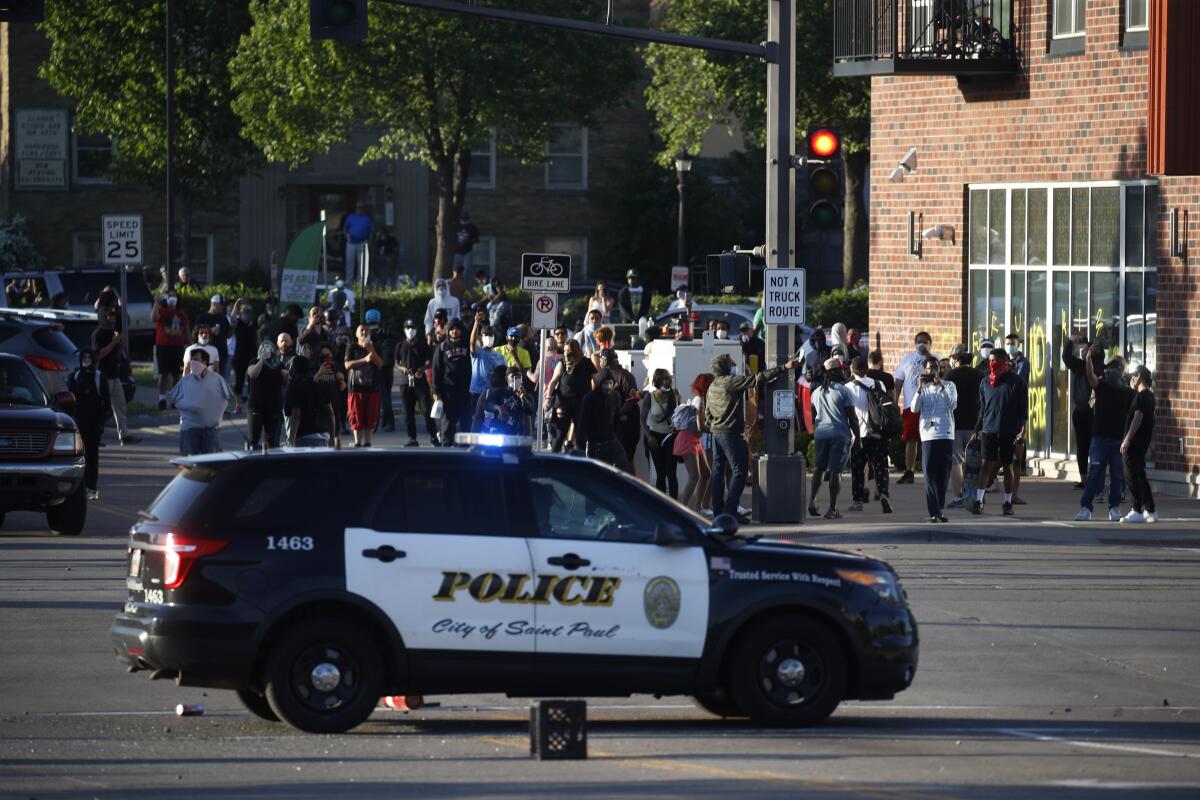
In May 2020, as Minneapolis burned and grieved after the police murder of George Floyd, Tim Walz seemed backed into a corner.
The Minnesota governor was facing a barrage of criticism for not moving faster to restore order after the torching of a police station and numerous businesses. When Walz mobilized the state National Guard three days after Floyd’s death, the move garnered praise from the most unlikely of supporters: then-President Trump.
In a call with Walz and other leaders about a week after Floyd’s death, Trump remarked that “what they did in Minneapolis was incredible.”
“They went in and dominated, and it happened immediately,” Trump said, according to an audio recording of the call obtained by ABC News and other outlets.
Those comments and Walz’s decision-making in the immediate aftermath of Floyd’s death have taken on new significance in recent days, since Vice President Kamala Harris named Walz as her running mate.
After a whirlwind week on the campaign trail with Harris, the until recently little-known Midwestern governor kicked off his first solo campaign stop as a vice presidential candidate with a speech at a labor convention in Los Angeles this week.
Walz was less than two years into his governorship and still grappling with the outbreak of the COVID-19 pandemic when Floyd was killed. His death on May 25, 2020, was captured on a bystander’s livestream, which showed him writhing and pleading for air as a white officer knelt on his neck for nearly 9½ minutes. The incident forced a reckoning with police brutality and racism, with mass protests spreading around the world. Some turned violent.
“That is a delicate balance that I think he has managed: where he has supported the police and ... supported community members simultaneously, and many state officials are not able to do that,” said Duchess Harris, a professor of American studies at Macalester College in St. Paul, Minn., whose research centers on race, law, politics and gender studies.
Among Democrats, Walz’s backers have highlighted the chaotic weeks that followed Floyd’s death to help show his willingness to set aside party differences to work toward a common goal, a trait that dates back to his days in Congress.
Republicans, meanwhile, have argued Walz’s actions showed he was a feckless leader who stood by, waiting to be summoned, while arson and vandalism spread through his state’s largest city.
Many take to the Minneapolis streets again to protest the death of George Floyd, defying a curfew. ‘They dropped the ball,’ one says of local leaders.
But as president, Trump struck a decidedly different tone on a call with Walz and administration officials on June 1, 2020 — a week after Floyd’s death.
“Tim, you called up big numbers and the big numbers knocked them out so fast, it was like bowling pins,” he said. Trump said he had been planning to send in federal troops “to get the job done right,” and singled out the city’s mayor, Jacob Frey, saying he’d shown a “total lack of leadership.” But he didn’t criticize Walz at the time.
In the call, Trump described Walz as “an excellent guy,” and later told him: “I don’t blame you. I blame the mayor.”
But that was then. Walz’s Republican vice presidential counterpart, Sen. JD Vance of Ohio, is now publicly accusing Walz of letting “rioters burn down Minneapolis.” The sometimes misleading or false claims are being echoed in Republican attack ads and on social media.
On the social media platform X, the official account for the Trump campaign, Team Trump, posted: “Tim Walz allowed rioters to burn down Minneapolis in 2020 and the few that got caught, Kamala bailed them out of jail” — in reference to Harris’ spoken support for a bail fund that was set up to help people who were arrested while protesting.
In the days after Floyd’s death, Walz called the city’s response an “abject failure,” setting off a frenzy of finger-pointing with Frey over who was to blame.
A series of follow-up reports pointed to significant breakdowns in communication and coordination that had led to a disjointed response from numerous law enforcement agencies.
A report commissioned by the city of Minneapolis suggested that local leaders’ unfamiliarity with the protocols for requesting National Guard assistance had “caused a delay in the approval and deployment of resources.”
A separate report by the state Senate — controlled by Republicans at the time — brought a more scathing critique, accusing both Walz and Frey of “failing to realize the seriousness of the riots” that caused roughly $500million in property damage, and of not acting “in a timely manner to confront rioters with necessary force due to an ill-conceived philosophical belief that such an action would exacerbate the rioting.”
Had Walz acted more decisively, the report’s authors said, “the riots would have been brought under control much faster.”
Walz’s backers have dismissed such criticism as an attempt to rewrite history.
The current president of the Democratic-controlled state Senate, Bobby Joe Champion, said Walz had “worked with a cross-section of people” to coordinate a response to the unprecedented mass demonstrations that rocked Minneapolis after Floyd’s death. Despite the criticism leveled at the governor, he did a “great job” balancing the right to free speech with the need for safety and order, Champion said.
“Hindsight being 20-20, there are those who are going to say what they coulda, woulda, shoulda done,” said Champion, who under the state constitution will become lieutenant governor if Harris and Walz win in November.
Any skeptics of Walz’s record need look only to the raft of “recent legislative victories” aimed at addressing “historic racial inequities” that will have a downstream impact on crime rates, Champion said.
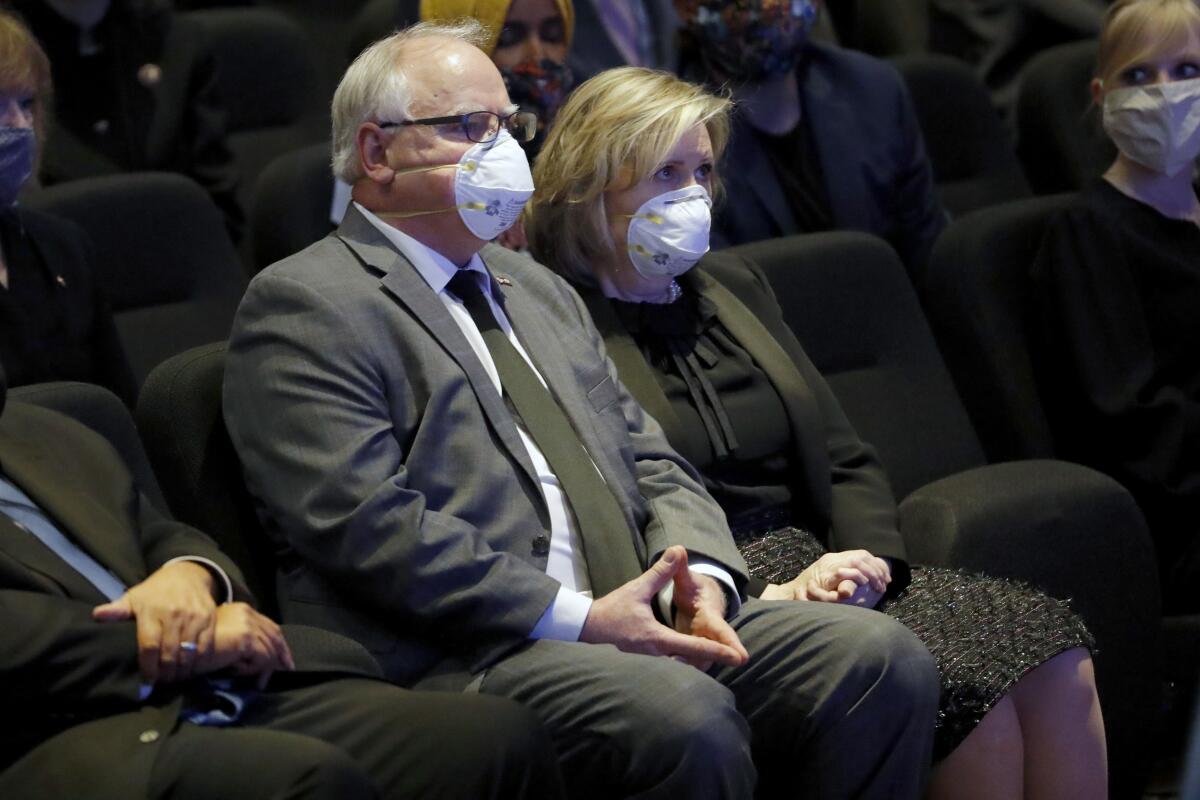
Walz’s political record is that of “a centrist Democrat who happened to be in control of a state where the Democrats had moved to the left,” said Michelle Phelps, a sociology professor at the University of Minnesota.
Walz has won respect from some in his party for his part in passing progressive legislation to expand free school lunches and protect transgender and abortion rights, she said, but has failed to push through any bills that “substantially challenged police powers in Minnesota.”
He also pushed for hundreds of millions of dollars in state funding for more police when violent crime surged after Floyd’s murder.
“If you look at him more holistically, what you get is this more centrist Democrat who is trying to thread this classic needle of how [to] rein in illegitimate police violence, while also promising a sense of security to the state’s residents,” said Phelps, who has written a book on police reform in Minneapolis. “And what that means is empowering police while also trying to make some tweaks along the edges.”
And just as Harris has had to answer for her past as a prosecutor in California, Walz’s record on criminal justice will probably come under intense scrutiny. In recent days, some have seized on the several times Walz intervened in high-profile criminal cases.
As governor of Minnesota, Tim Walz has passed dozens of climate and environment initiatives — many of which mirror California’s own ambitious goals.
After Floyd’s death, the governor made the unusual move of reassigning the prosecution of the fired Minneapolis police officer who killed him to the state attorney general, Keith Ellison. More recently, he publicly questioned the top prosecutor in the county where Minneapolis is located over her handling of several cases, including one in which she charged a state trooper with the murder of a Black motorist.
The prosecutor, Mary Moriarty, later dropped murder and manslaughter charges against the trooper amid mounting pressure from law enforcement groups, and accused Walz of treating her differently than her male predecessor because she’s a queer woman.
Toussaint Morrison, a filmmaker and musician, said that although Walz faced a difficult challenge in responding to the unrest, his decision to deploy the National Guard escalated an already tense situation as numerous troops used force against protesters. The following year, Walz again used the Guard to respond to protests over the killing of a Black motorist in a Minneapolis suburb.
“What I saw is someone who targeted, brutalized and attempted to intimidate protesters. I understand people want public safety — they want to feel safe. On the other hand, people want to be able to access their 1st Amendment rights,” said Morrison, a longtime organizer in the Twin Cities who has supported families affected by police brutality. “And I’m saying this as someone who will likely vote for Harris-Walz.”
The Associated Press contributed to this report.
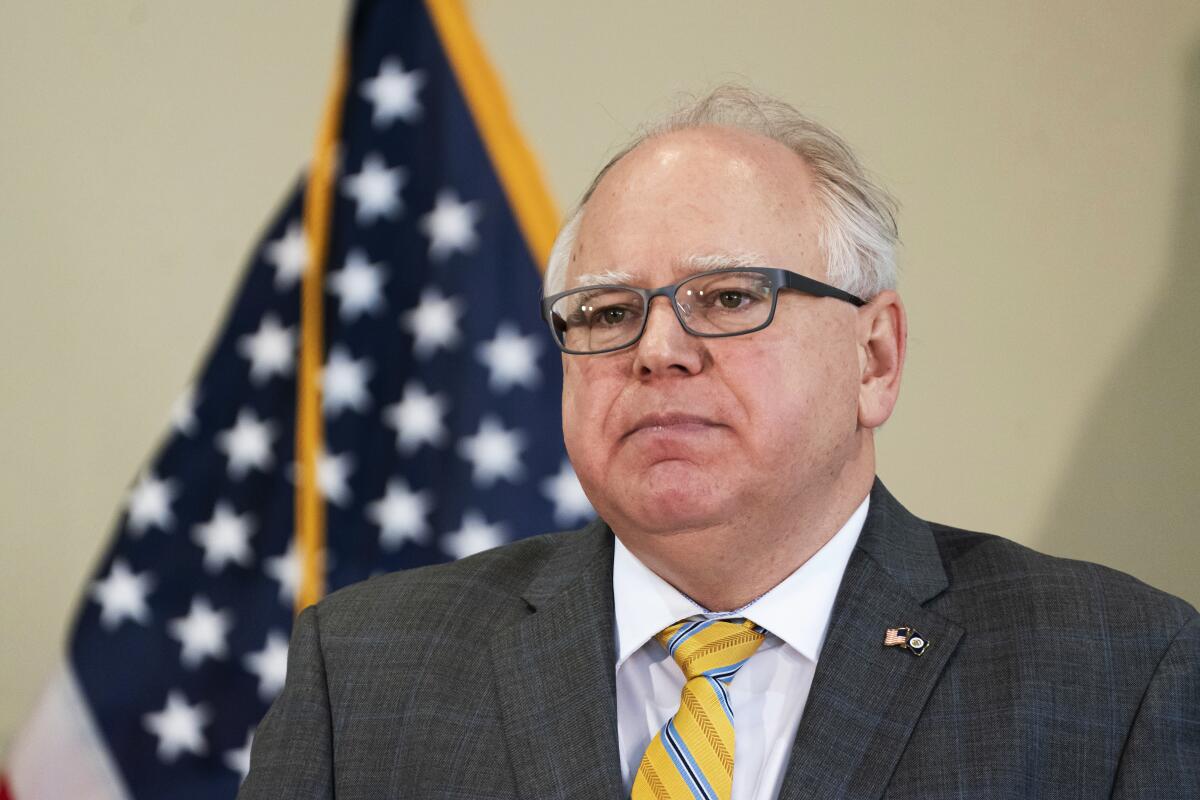
More to Read
Get the L.A. Times Politics newsletter
Deeply reported insights into legislation, politics and policy from Sacramento, Washington and beyond. In your inbox three times per week.
You may occasionally receive promotional content from the Los Angeles Times.
